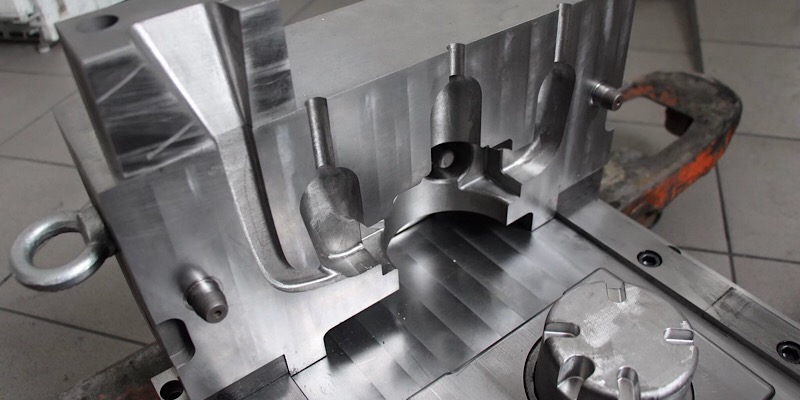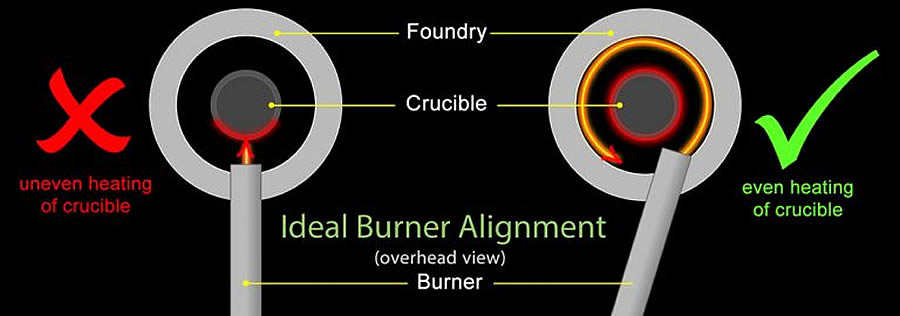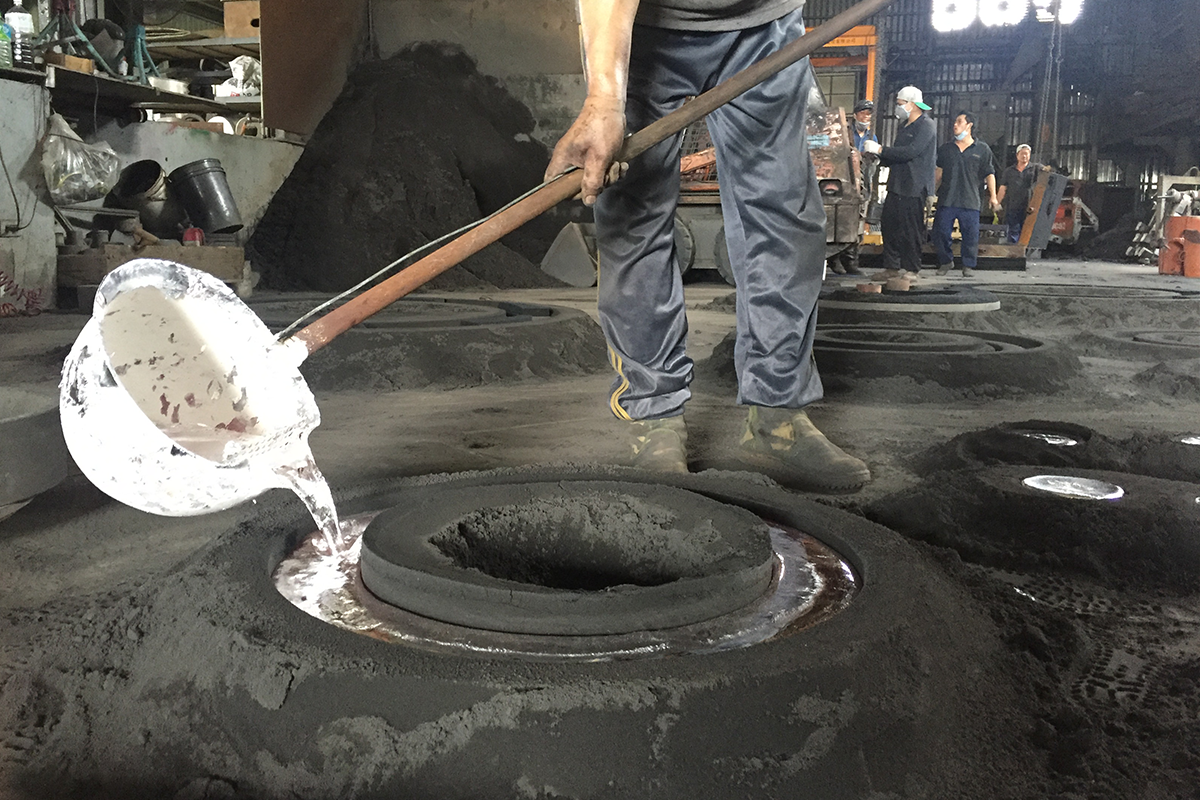Aluminum Foundry Wisconsin is valued for quality in casting
A Comprehensive Guide to the Methods Used in Aluminum Foundry Workflow
Aluminum Foundry operations employ various casting methods, each with distinct processes and applications. Comprehending these techniques is crucial for optimizing production and attaining wanted material residential properties. From sand spreading to die spreading, the options available can substantially affect performance and price. As modern technology breakthroughs, so as well do these techniques, prompting a more detailed exam of their benefits and restrictions. The implications of these growths call for additional exploration.
Review of Aluminum Spreading Techniques
Aluminum casting strategies encompass a selection of techniques used to form molten Aluminum right into preferred types. These methods are essential in the manufacturing and design sectors, using flexibility and performance. Significant strategies consist of die casting, which utilizes high-pressure to inject Aluminum right into molds for precision parts, and gravity spreading, where molten Aluminum is poured into mold and mildews under the impact of gravity, enabling larger, much less intricate shapes. Investment spreading, one more approach, involves developing a wax pattern covered in ceramic, offering high dimensional precision for elaborate layouts. Additionally, permanent mold and mildew spreading utilizes multiple-use mold and mildews, enhancing manufacturing performance and decreasing waste. Each strategy satisfies details applications, balancing elements such as expense, manufacturing quantity, and material residential properties. As industries develop, innovations in these casting methods remain to boost the quality and performance of Aluminum components, positioning them as essential processes within modern manufacturing.
Sand Casting: Process and Applications
Sand spreading is an extensively utilized approach in the Foundry sector, known for its simplicity and flexibility. Aluminum Foundry. This procedure entails developing a mold from a blend of sand and a bonding representative, generally clay. The mold is formed around a pattern, which is a replica of the desired end product. As soon as the mold is prepared, liquified Aluminum is put right into the dental caries, allowing it to solidify right into the wanted form
One of the key benefits of sand spreading is its capacity to generate huge parts and intricate geometries, making it ideal for different applications, including automobile parts, equipment parts, and attractive things. Furthermore, sand casting can suit various Aluminum alloys, improving its adaptability. The process is affordable for reduced to tool manufacturing runs, as it does not require expensive tooling. Overall, sand spreading continues to be a fundamental strategy in Aluminum Foundry procedures due to its effectiveness in conference varied manufacturing demands.
Die Casting: Benefits and Limitations
While die casting is typically compared to sand spreading, it supplies unique advantages and restrictions that make it suitable for details applications in the Aluminum Foundry market. One significant benefit of die casting is its capability to produce complicated forms with high dimensional accuracy and excellent surface area coating. This process is particularly valuable for mass manufacturing, as it allows for faster cycle times and decreased labor costs. Furthermore, die casting lessens product waste, enhancing total effectiveness.
However, die spreading additionally has limitations. The first tooling costs are fairly high, making it much less possible for tiny production runs. The procedure is best fit for metals with low melting factors, which can limit product choices. Pass away spreading is also limited pertaining to the maximum dimension of the components generated, as bigger components might require alternate techniques. Stabilizing these elements is important for figuring out the ideal application of die spreading in the Aluminum Foundry sector.
Investment Spreading: Accuracy and Information
Financial investment spreading is a very precise manufacturing procedure that permits complex designs and fine details in Aluminum components. This technique provides considerable advantages, including enhanced dimensional accuracy and minimized machining needs. Its applications extend different industries, highlighting its versatility and efficiency in producing complex parts.
Refine Overview
The investment casting process is renowned for its capacity to generate detailed forms and high-precision parts. This method begins with developing a wax pattern, which is after that covered with a ceramic shell. Once the shell sets, the wax is dissolved, leaving an exact dental caries for the liquified metal. The Aluminum is poured right into this dental caries, catching the fine details of the initial pattern. After cooling down, the ceramic shell is escaped, revealing the cast part. Any type of needed completing job, such as machining or surface area therapy, is carried out to achieve the wanted specifications. This process is especially beneficial for intricate geometries that are tough to accomplish with conventional spreading methods, guaranteeing both quality and precision in the final item.
Advantages of Accuracy
Precision in financial investment spreading offers substantial advantages, making it a recommended selection for producing complex components. This method allows the manufacturing of intricate forms with tight tolerances, reducing the demand for comprehensive machining and decreasing material waste. The ability to accomplish high dimensional accuracy equates to a premium fit and finish, boosting the general high quality of the final item. Additionally, financial investment spreading allows for the unification of fine details, which is important for parts requiring intricate layouts. The process also supports the usage of numerous Aluminum alloys, additionally increasing its applicability. Overall, the precision used by financial investment casting not only enhances the visual and useful qualities of elements yet additionally adds to boosted efficiency in production cycles.
Applications in Industry
While numerous producing processes exist, financial investment spreading stands out for its adaptability throughout different sectors, specifically in sectors demanding high precision and detailed components. This spreading approach is widely used in aerospace, auto, and clinical areas, where tight tolerances and elaborate designs are necessary. For example, aerospace components gain from financial investment spreading's capacity to produce complicated geometries that decrease weight without sacrificing architectural honesty. In a similar way, the vehicle market employs this strategy to produce engine parts that call for sturdiness and precision. In the medical field, financial investment casting makes it possible for the manufacturing of surgical tools and implants that need to meet rigorous high quality criteria. Overall, financial investment spreading significantly improves item performance and integrity, making it a very useful method in modern production applications.
Comparison of Casting Approaches
 The contrast of casting methods discloses distinctive advantages and applications throughout different techniques - Aluminum Foundry. Sand casting is usually celebrated for its versatility and cost-effectiveness, while die spreading is recognized for its effectiveness and accuracy in producing high volumes. Investment spreading, formerly talked about, showcases its special capacity to develop complex layouts, better emphasizing the diverse abilities of each technique in Aluminum Foundry procedures
The contrast of casting methods discloses distinctive advantages and applications throughout different techniques - Aluminum Foundry. Sand casting is usually celebrated for its versatility and cost-effectiveness, while die spreading is recognized for its effectiveness and accuracy in producing high volumes. Investment spreading, formerly talked about, showcases its special capacity to develop complex layouts, better emphasizing the diverse abilities of each technique in Aluminum Foundry proceduresSand Spreading Advantages
Sand spreading offers several advantages when compared to various other casting approaches, making it a recommended selection in numerous production applications. One of the primary benefits is its affordable, as the products required, such as sand and steel, are easily available and low-cost. In addition, sand spreading permits better design flexibility, allowing the production of complex shapes and large components that may be testing to attain with various other strategies. The procedure additionally fits a vast array of metal alloys, including Aluminum, enhancing its flexibility. Furthermore, sand molds can be easily fixed or changed for succeeding casts, making it effective for both little and large manufacturing runs. Overall, these find this benefits add to sand casting's appeal in the Foundry sector.
Die Casting Techniques
Pass away casting techniques attract attention as a very reliable approach for producing steel parts, particularly when contrasted to typical spreading methods like sand spreading. This process entails requiring liquified Aluminum right into a mold and mildew under high pressure, resulting in specific dimensions and a smooth surface area coating. Unlike sand casting, which needs comprehensive ending up job, die casting decreases post-production processing, enhancing total efficiency. In addition, die spreading can fit complex geometries, enabling detailed styles that would certainly be challenging to accomplish through various other approaches. The rate of production is an additional advantage; pass away spreading can create big quantities of parts in a shorter timeframe. Overall, the combination of style, efficiency, and accuracy adaptability makes die casting a favored option in contemporary Aluminum Foundry procedures.
Financial Investment Casting Applications
Investment casting, often referred to as lost-wax casting, provides unique advantages over other casting techniques, specifically relative to accuracy and surface area coating. This method permits for the production of detailed forms and great information that are difficult to accomplish with sand or die casting. Additionally, investment spreading generates parts with premium dimensional precision, minimizing the requirement for substantial machining. Its adaptability makes it appropriate for different industries, including aerospace, automotive, and clinical gadgets, where high-grade parts are crucial. Contrasted to die casting, which can be limited by mold and mildew intricacy, financial investment spreading stands out in creating intricate geometries without endangering architectural integrity. Subsequently, the selection of investment casting comes to be significantly positive for applications demanding high performance and integrity.
High Quality Control in Aluminum Foundry Operations
How can Aluminum foundries ensure the finest quality in their items? Executing strenuous quality assurance measures is crucial. Factories typically start by establishing clear specifications for the Aluminum alloys utilized, ensuring they fulfill industry standards. Continuous tracking throughout the melting and pouring procedures aids determine any kind of variances from desired chemical structures.
Visual evaluations and non-destructive testing approaches, such as ultrasonic or X-ray examinations, are frequently used to detect interior problems or incongruities in castings. Furthermore, statistical procedure control strategies track production information, permitting very early identification of prospective concerns.
Regular training and qualification of personnel in quality guarantee methods are crucial for keeping high criteria. Executing feedback loops from customers can help foundries refine their processes and improve product high quality. By adhering to these practices, Aluminum factories can continually supply top quality products that surpass or satisfy consumer assumptions.
Future Patterns in Aluminum Casting Innovation
Advancements in Aluminum casting innovation are poised to reshape the industry landscape, building upon established top quality control methods. Advancements such as additive manufacturing and smart Foundry services are emerging, enabling boosted style flexibility and reduced waste. The assimilation of expert system and artificial intelligence in procedure monitoring enables real-time changes, boosting effectiveness and product high quality.
Sustainability remains a vital emphasis, with a focus on recycling scrap Aluminum and lowering energy consumption. Advanced alloy solutions are being created to optimize performance while decreasing ecological impact. The fostering of automated systems, including robotics for dealing with and pouring, guarantees to boost work environment safety and precision.
Digital doubles are gaining traction, permitting for virtual simulations that assist in far better decision-making and predictive maintenance. As these trends progress, they will likely develop a more effective, lasting, and technologically advanced Aluminum casting sector, establishing brand-new standards for high quality and efficiency.
Frequently Asked Concerns
What Precaution Should Be Taken in Aluminum Foundry Workflow?
In Aluminum Foundry operations, vital safety and security measures include personal safety tools, proper ventilation, routine training, threat evaluations, look these up emergency situation preparedness, and adherence to procedures to minimize threats linked with liquified steel and heavy machinery.
How Is Recycled Aluminum Utilized in Foundry Processes?
Recycled Aluminum is generally made use of in Foundry procedures to decrease ecological effect and production expenses. It goes through melting and refining, enabling producers to develop high-quality products while preserving power and decreasing waste in the Aluminum lifecycle.
What Equipment Is Essential for Aluminum Casting?
Essential devices for Aluminum spreading consists of heating systems for melting, mold and mildews for shaping, pouring ladles, cooling systems, and finishing devices. Each part plays a critical duty in ensuring the performance and top quality of the casting process.
How Do Ecological Rules Effect Aluminum Foundries?
Environmental guidelines considerably affect Aluminum foundries by enforcing limitations on emissions and waste monitoring. Conformity needs investment in cleaner modern technologies, which can raise operational costs yet ultimately promotes sustainability and minimizes the environmental footprint of the sector.

What Prevail Defects in Aluminum Castings and Their Solutions?
Typical defects in Aluminum spreadings include contraction, porosity, and surface flaws. Solutions entail enhancing thaw top quality, controlling cooling rates, and employing proper mold and mildew layout, guaranteeing much better stability and efficiency of the last cast products.
 Major methods consist of pass away spreading, which uses high-pressure to infuse Aluminum into molds for accuracy components, and gravity spreading, where liquified Aluminum is put right into molds under the influence of gravity, permitting for bigger, much less intricate shapes. While die casting is commonly contrasted to sand spreading, it supplies distinctive benefits and limitations that make it appropriate for certain applications in the Aluminum Foundry market. Sand spreading is commonly commemorated for its versatility and cost-effectiveness, while die casting is recognized for its efficiency Visit Your URL and precision in producing high volumes. Pass away spreading strategies stand out as an extremely effective technique for creating metal parts, particularly when compared to conventional casting methods like sand casting. Contrasted to pass away spreading, which can be limited by mold and mildew intricacy, investment spreading succeeds in creating complicated geometries without compromising architectural honesty.
Major methods consist of pass away spreading, which uses high-pressure to infuse Aluminum into molds for accuracy components, and gravity spreading, where liquified Aluminum is put right into molds under the influence of gravity, permitting for bigger, much less intricate shapes. While die casting is commonly contrasted to sand spreading, it supplies distinctive benefits and limitations that make it appropriate for certain applications in the Aluminum Foundry market. Sand spreading is commonly commemorated for its versatility and cost-effectiveness, while die casting is recognized for its efficiency Visit Your URL and precision in producing high volumes. Pass away spreading strategies stand out as an extremely effective technique for creating metal parts, particularly when compared to conventional casting methods like sand casting. Contrasted to pass away spreading, which can be limited by mold and mildew intricacy, investment spreading succeeds in creating complicated geometries without compromising architectural honesty.